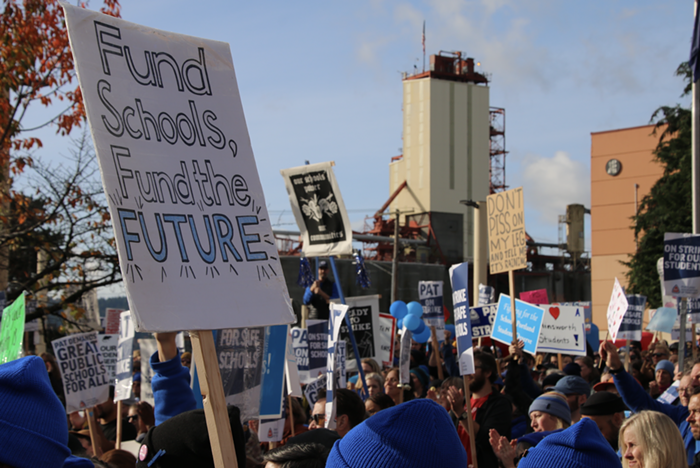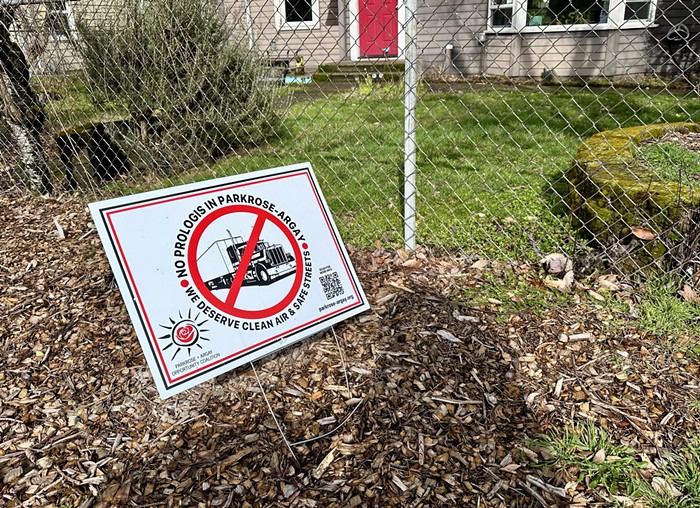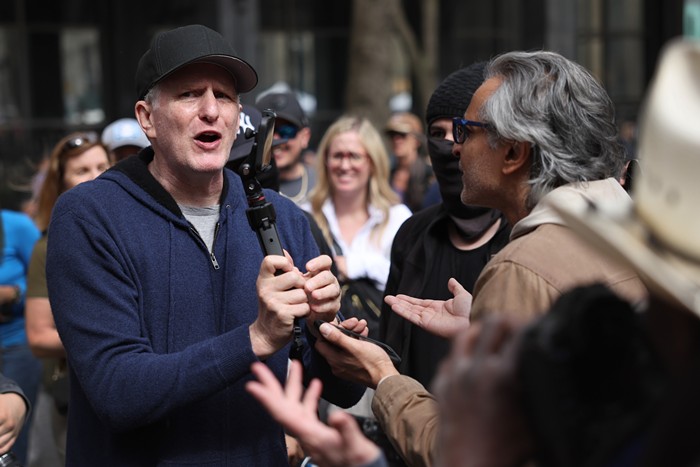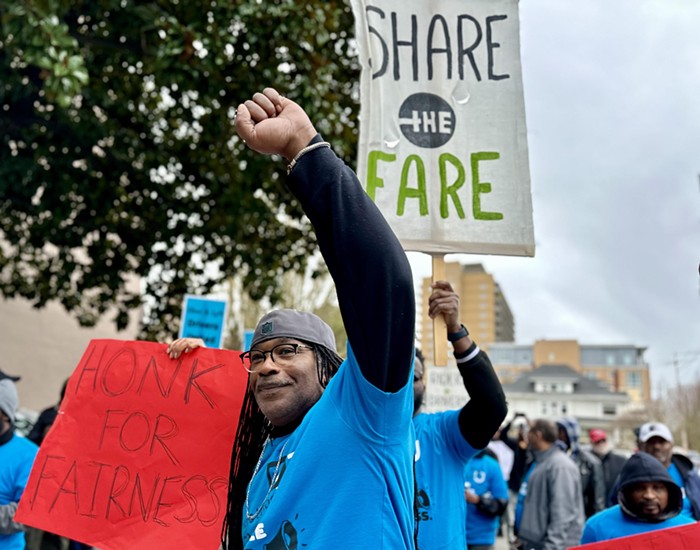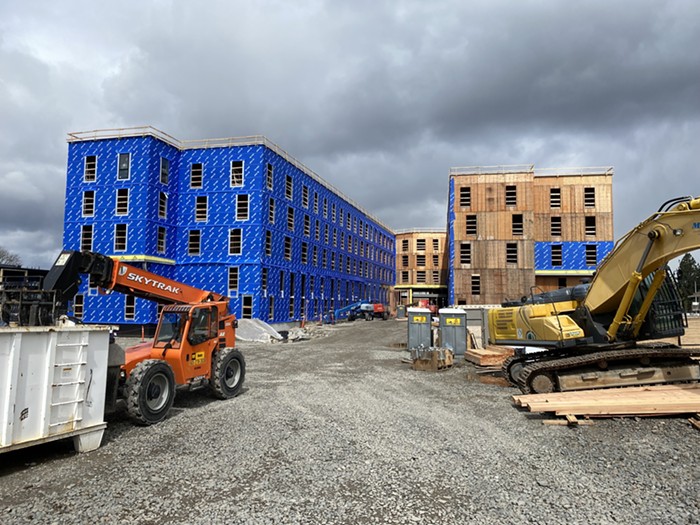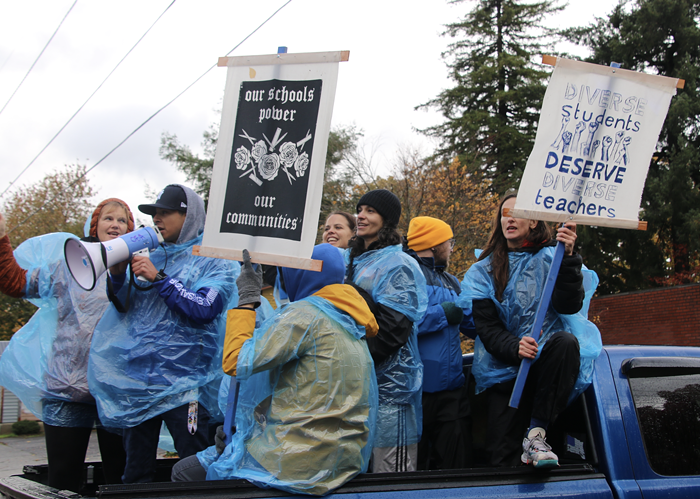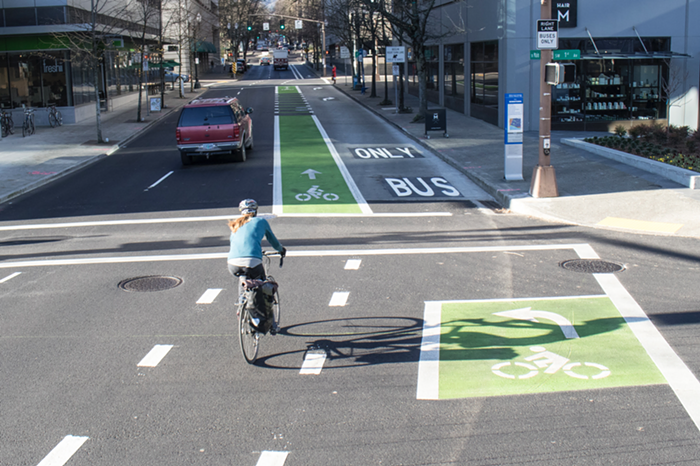Long ago, in the ancient mists of prehistory, the internet was a luxury.
Today, the internet’s part of... well, everything. Yet most Americans get online the same way our stupid caveman ancestors did: Paying corporations for permission to access private telecommunication networks. Since internet service providers (ISPs) own much of the infrastructure that America’s internet runs on, they get to make the rules—determining prices, speeds, and, depending on where you live, if you can even get online.
Yet even as the internet weaves itself deeper into every aspect of our lives—functioning less like a luxury and more like a public utility—ISPs have more control than ever. Last December, Ajit Pai, the Trump-appointed chairman of the Federal Communications Commission (FCC), ignored public sentiment and scrapped Obama-era net neutrality regulations, granting ISPs even more power to control their customers’ access to news, entertainment, and online services.
But there’s a different way to get online, and it might be a better one: An internet infrastructure that’s owned not by corporations, but by the public.
Portlanders don’t have to look far to see one in action.
Just southeast of Portland, in Sandy, Oregon, there’s SandyNet: a publicly owned ISP that uses high-capacity fiber-optic cable to provide Sandy residents download speeds of 1 gigabit per second. Not only is that 40 times faster than the standard broadband speed of 25 megabits per second, it’s also cheaper: SandyNet’s gigabit service costs $60 a month.
They aren’t the only Oregonians with a publicly owned fiber network. In 2005, Monmouth and Independence—two neighboring Oregon towns with a combined population of around 20,000—found themselves underserved by existing ISPs. So they built their own: MINET, which touts itself as “simultaneously a public utility and a competitive service business.” Noting that 85 percent of serviceable locations in the area use MINET, the utility-slash-business brags it’s “powered by the residents of Monmouth and Independence and not by corporate stockholders. You own us.”
MINET’s monthly rate for gigabit-speed internet is $125, and while that’s higher than some municipal networks, at least residents of Monmouth and Independence reliably get gigabit. Though CenturyLink’s privately owned Portland fiber network advertises gig speeds for about $80 a month, subscribers need to live in one of their specialized service areas. A locally owned ISP, Stephouse Networks, offers Portlanders gig speeds for $69 per month—with the catch that, since their connections are wireless, customers’ internet access points need to be in the line of sight of one of Stephouse’s towers.
But while networks like SandyNet and MINET use fiber—which transfers so much data so quickly that it’s essentially future-proofed, or as close to future-proofed as anything can be in tech—Comcast has a different tactic. They offer speeds of up to a gig in Portland by goosing more speed from their existing infrastructure of coaxial cables—the same aging copper cables originally used to transmit cable TV. While Comcast’s often-bundled prices vary, customers who only want gigabit internet pay between $100 and $110 a month.

Portland’s been tempted with a better internet before. The Personal Telco Project—a nonprofit that scatters free WiFi access points around the city—has been operating at varying levels since 2000, at one point boasting around 120 networks throughout Portland.
“The foundation of Personal Telco was thinking that we were going to build a mesh network over the whole city of Portland,” says Russell Senior, the president of Personal Telco and a research programmer and data manager. “The issue we ran into was just that there were trees—and we can’t get the signal through the trees! Houses are too short, trees are too tall.”
“That’s why wireless networks don’t work very well here,” adds Noah Fontes, a local software engineer. He’s not kidding: In 2006, a Silicon Valley startup called MetroFi vowed to cover 95 percent of Portland with free WiFi. A year later, faced with terrible performance and underwhelmed Portlanders, the plan was dead.
And then there was Google.
In 2014, Google was on a spree of installing fiber networks across the country—and considered doing so in Portland. While Portland City Council lobbied hard, Google ultimately abandoned their ambitious plans.
That, Senior says, left Portland with no clear path forward.
“When the public thought that Google was going to rescue them,” says Senior, “city council said, ‘This is off our plate. We don’t have to think about this anymore.’”
Fontes and Senior are part of Municipal Broadband PDX, a grassroots group pushing for Portland to build a publicly owned fiber network like those in Sandy, Monmouth, and Independence. But unlike those networks—in which local governments effectively serve as ISPs—Municipal Broadband PDX advocates for an open-access system.
In that case, the City of Portland would build a citywide fiber network and then serve as a sort of digital wholesaler, charging existing ISPs franchise fees to operate on the city’s network. Not only could the city set rules—like requiring ISPs to abide by net neutrality regulations—but, with multiple ISPs using the same fiber, ISPs would need to drop prices and improve service to be competitive. It’d be a system much like one that’s currently in place in Ammon, Idaho.
The City of Portland has considered it before. In 2007, the city undertook what Brendan Finn, chief of staff for City Commissioner Dan Saltzman, calls a “robust” examination of community fiber.
“What we found from the report was that there was not a financially sustainable model for us to be a wholesaler,” says Finn. “And for us to be a retailer, to be the ISP, was also a risky endeavor, because the infrastructure at the time was so expensive to install and maintain.”
How expensive? Um... expensive. When Google considered bringing fiber to Portland, the city estimated the cost to Google would be at least $300 million.
“We’ve got to make it easy for the private sector, since we can’t build it ourselves. There’s just not going to be the appetite for that,” says Finn. “So we would create this environment in Portland where the doors are open: We will do whatever it takes for you to put this infrastructure in, within certain boundaries. And just roll out the red carpet. We tried to do that with Google. We learned it was an incredibly expensive endeavor.”
But Finn stresses it’s an important endeavor, too, noting that “having the highest broadband speeds at the lowest price would be a benefit to the City of Portland.”
In 2011, Portland City Council adopted Portland’s Broadband Strategic Plan, which stated that “without better internet and telecommunications policies, poverty and disparity will grow,” adding that online services have become “essential to health and aging,” while “modern K-12 education methods and goals depend on students and families having access to the internet.”
Senior says community fiber could help with those issues—and solve other problems with America’s internet.
“Net neutrality is just one piece of the whole thing,” he says. “The problem is that the incumbents—that is, Comcast, and now, more so than previously, CenturyLink—they just have a lock on everything. Federal policy says if you own the infrastructure, it’s yours to do whatever you want with it. And that gives them the power to do whatever the hell they want. They set your prices arbitrarily. They define the service offerings. They have the authority to sell your browsing history, and the whole net neutrality thing... freaks people out, legitimately.”
Surprising no one, incumbent ISPs aren’t huge fans of public networks.
“Net neutrality is just one piece of the whole thing. The problem is that the incumbents—that is, Comcast, and now, more so than previously, CenturyLink—they just have a lock on everything. And that gives them the power to do whatever the hell they want.”
—Russell Senior, Municipal Broadband PDX
Last year in Fort Collins, Colorado, a group backed by private ISPs, including Comcast, spent almost $1 million to fight a municipal broadband proposal.
“The big spenders were nonetheless defeated by a citizens’ group that spent only $15,000 to support the bond measure,” reported Fortune, “which passed with 57 percent of the vote... approving up to $150 million in financing for a city-run broadband utility.”
There’s a reason ISPs fought so hard: According to an estimate by the nonprofit Institute for Local Self-Reliance, “competition in Fort Collins would cost Comcast between $5.4 million and $22.8 million per year.”
ISPs also push for laws that prohibit and restrict municipal networks, often finding allies in conservative lawmakers. Twenty states “already have laws restricting municipal broadband in some way,” wrote Ars Technica last fall, “effectively shielding private broadband providers from competition even as many residents lack robust broadband options.”
These laws are generally sold under the guise of providing a “level playing field” and “fair competition” for ISPs.
The threat to ISPs is real—and has echoes of United States v. AT&T, the antitrust case that, in 1982, enabled the Justice Department to force AT&T to dismantle the Bell System, their telephone monopoly that had existed since 1877.
Today, AT&T is an ISP. And even under the Trump administration’s aggressively anti-regulatory policies, they work alongside Comcast and Time Warner to fight regulations intended to prevent future monopolies.
“This is a gigantic cash cow for them, and they’re terrified... that municipalities are going to build a network and freeze them out,” Senior says. “My feeling is, you don’t have to freeze them out. If you build a fiber network that’s open access, they can actually be service providers on that. So they’re not frozen out, they just lose their vertical monopoly control.”
And that, adds a grinning Fontes, would give customers more choices.
“You click a checkbox on a website,” he says, “and you change your ISP.”
None of the ISPs the Mercury spoke with seemed exactly terrified of municipal networks, but they also weren’t thrilled.
“We believe the best approach is for municipalities to explore workable solutions with existing internet service providers,” says Kerry Zimmer, a public relations manager for CenturyLink. “Century- Link will continue to work closely with communities, local leaders, and policymakers on creative public-private partnerships that bring high-speed internet services to more American homes and businesses. However, if local governments choose to compete with private internet service providers, there needs to be a level playing field.”
Comcast took a harder line.
“I’m not aware of any examples of Comcast participating in the operation of an existing publicly owned internet service,” says Amy Keiter, director of external communications for Comcast in Oregon and Southwest Washington. “We focus on meeting the ever-increasing technology demands of our customers for innovation, speed, and service by providing a large, robust, and reliable network.”
Meanwhile, Portland’s Stephouse Networks—a local ISP with about a dozen employees—has also been paying attention. Stephouse president Tyler Booth points out that those wanting gig speeds might be jumping the gun.

“Certainly there’s applications where gigabit is nice to have, but that’s sort of the reality of the situation—it’s cool to have, but most of us don’t need it yet,” Booth says. “Now, that day is quickly approaching where it’s going to become more and more prevalent for applications that do run on gigabit services,” he adds, but “right now, those kind of things are a ways out.”
Booth says a municipal network in Portland “could have some advantages”—but also some drawbacks. While he hopes to eventually build Stephouse’s own fiber network, he’s less enthused about operating on a public one.
“From a service provider standpoint, if we’re supporting something, I’d prefer to own the infrastructure,” he says. “Years ago, we had wholesale agreements with various providers that were giving us access to the whole city—but what we found is that we made very small margins on the overall costs in order for us to compete with other providers, and we had very little control on the service we were able to provide to subscribers. Whereas if I own the infrastructure, I can tell customers with confidence we can solve a problem.”
Then there’s another roadblock: Installing fiber is really, really expensive.
“If I were to go out and build out a neighborhood [with fiber], the general cost is going to be somewhere between $1,000 to $5,000 per home,” says Booth. “So if we’re looking at the City of Portland to build out the entire city, that’s a gigantic number in terms of how much it costs. And I think that’s going to be very hard to get Portland voters on board with, just because of the fear of upfront costs and unknown benefits surrounding it.”
That seems to have been the case in Lake Oswego in 2016, when the rich suburb’s city council almost approved a $32 million plan to create a municipal fiber network—only to be challenged by a now-disbanded political action committee that warned that, should the plan fail, taxpayers would get stuck with the bill. The proposal was soundly defeated in a public advisory vote.
While they admit that determining specific costs will require feasibility and engineering studies, Fontes and Senior peg a ballpark figure of fiber installation at about $3,000 per house, and suggest funding the endeavor by selling bonds would shield taxpayers from risk. And, they note, the costs pencil out in the long term.
“If you compute a lifetime’s worth of Comcast service... owning the infrastructure’s a smarter long-term investment,” says Senior.
“If you’re paying $100 a month, that’s $1,000 a year,” Fontes adds. “It gets up there real fast.”
Fontes and Senior point to another benefit of a public network: Unlike private networks, the city could ensure all neighborhoods—not just the affluent ones targeted by private enterprise—would get service.
“What we’d like to see, in an ideal world, is free access for anyone who’s on the water bureau’s subsidized [list],” says Fontes, referencing the financial assistance the Portland Water Bureau grants to qualifying customers.
The internet isn’t quite as vital as water—but with the digital divide already widening the socioeconomic gap between those who can easily get online and those who can’t, any municipal network would need to be accessible to everyone in order to justify its existence.
There would be massive challenges to Portland building its own fiber network—from the practical (Sandy, Monmouth, Independence are all significantly smaller than Portland) to the financial ($300 million!). And even in the best case scenario, Fontes says, it’d be years before anyone in Portland could take advantage of municipal broadband.
But the conversation’s happening now. Finn thinks he knows why.
“The rollback of the Obama-era net neutrality rules,” he explains. “The Trump administration’s appointees’ rollback of those protections of a free and open internet have set a fire in communities across the country that [fear] our internet is going to basically be taken over by corporate interests that have the most money to spend.”
And that, he says, “has created a drumbeat for advocacy to get the talk going again for municipal broadband.”
Fontes is optimistic that Portlanders would support such a project.
“It’s a real easy sell for people,” he says, “because you put something on a ballot that says, ‘Hey, this is an alternative to Comcast and CenturyLink!’”
And ultimately, Portlanders will be the ones to decide if a citywide municipal fiber network should be a reality. The most important part of any network isn’t its miles of fiber-optic cable. The most important part of a network is the people who benefit from it.
“We need people,” says Senior. “We need to motivate the public. And part of that is for people to just be aware that this is a thing that’s possible.”


